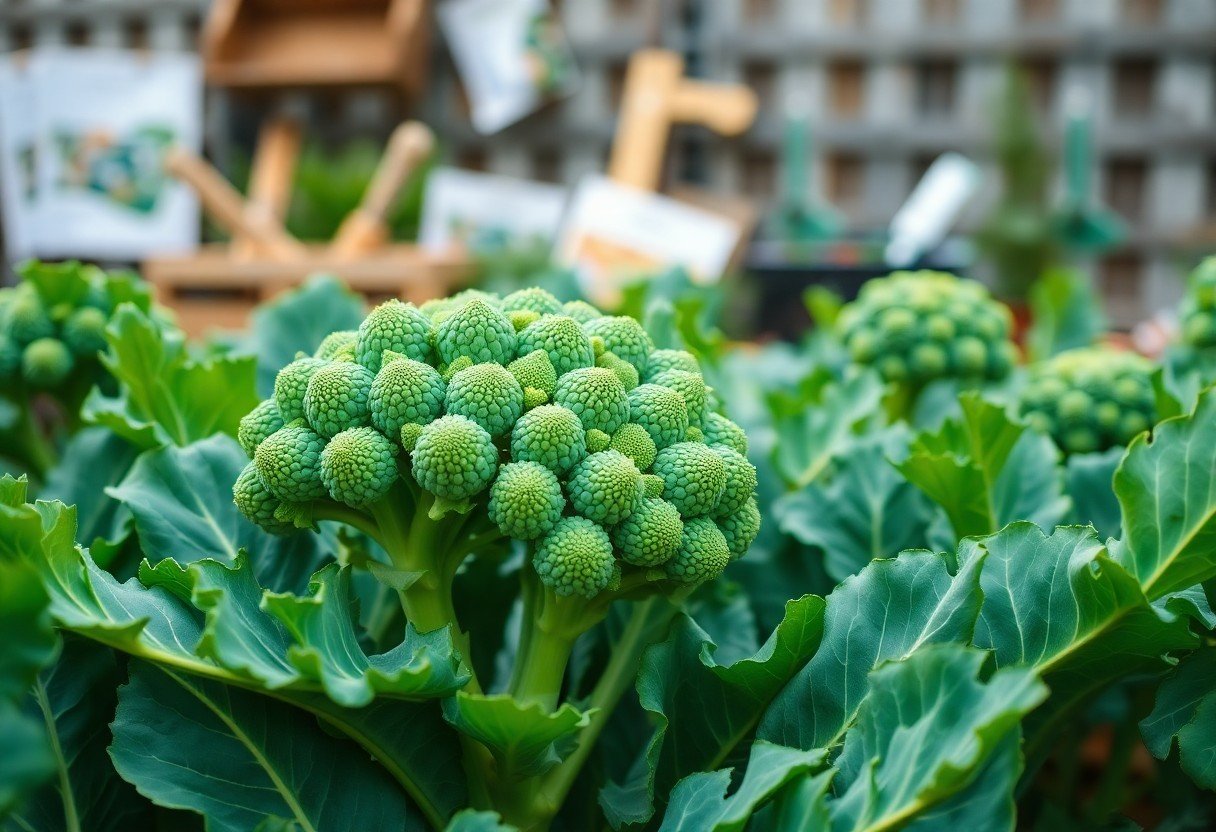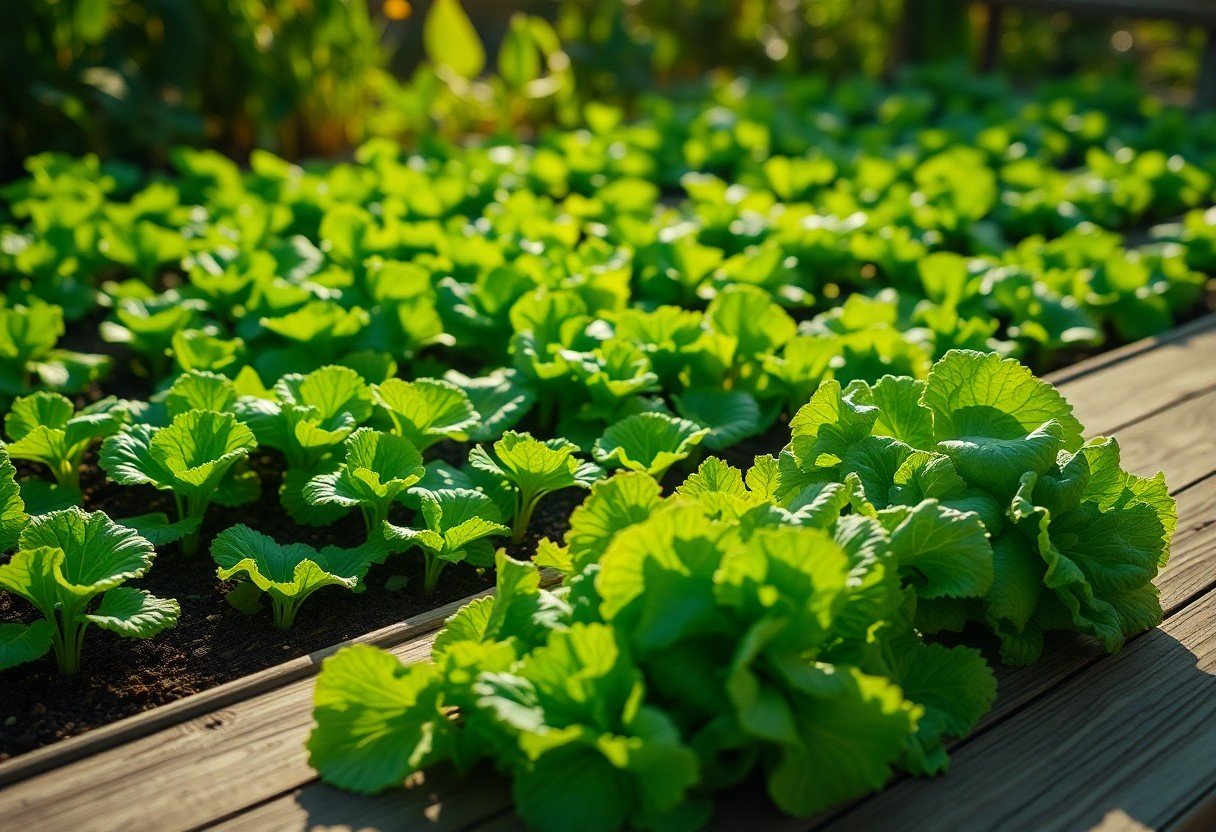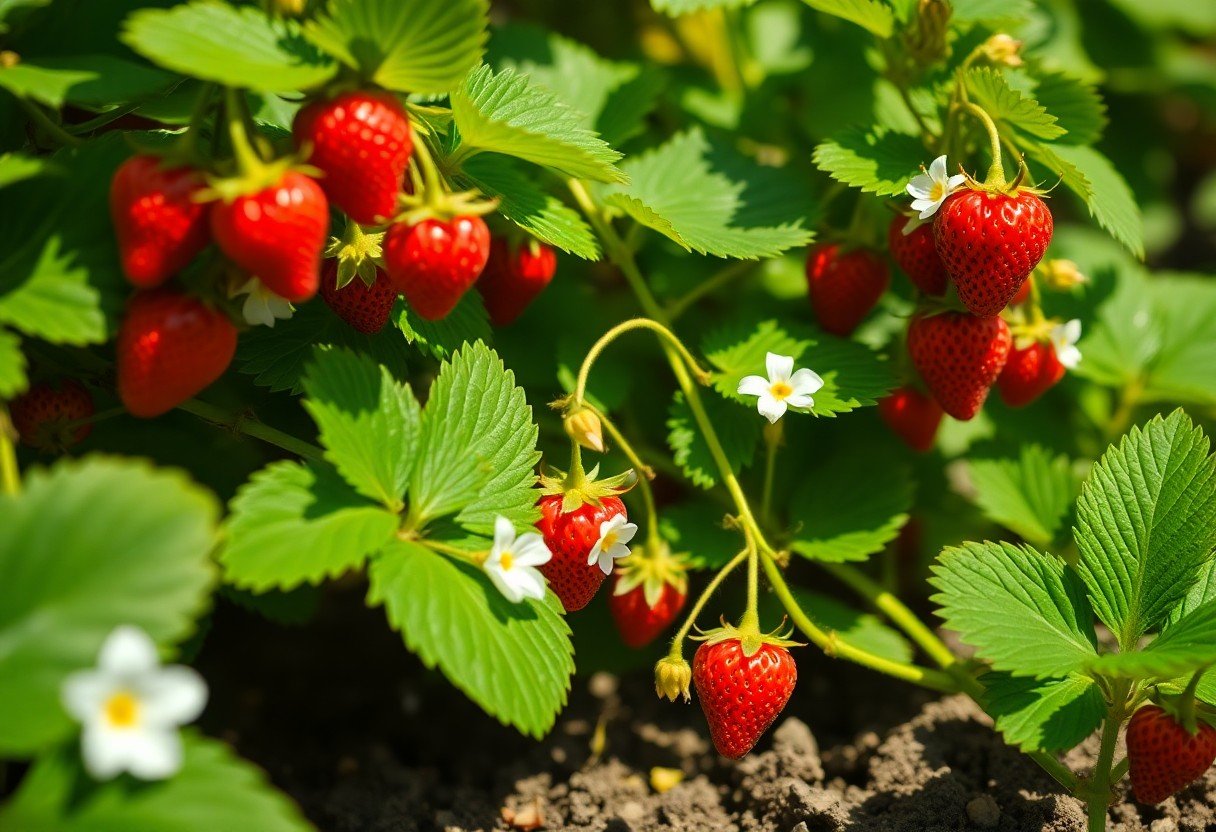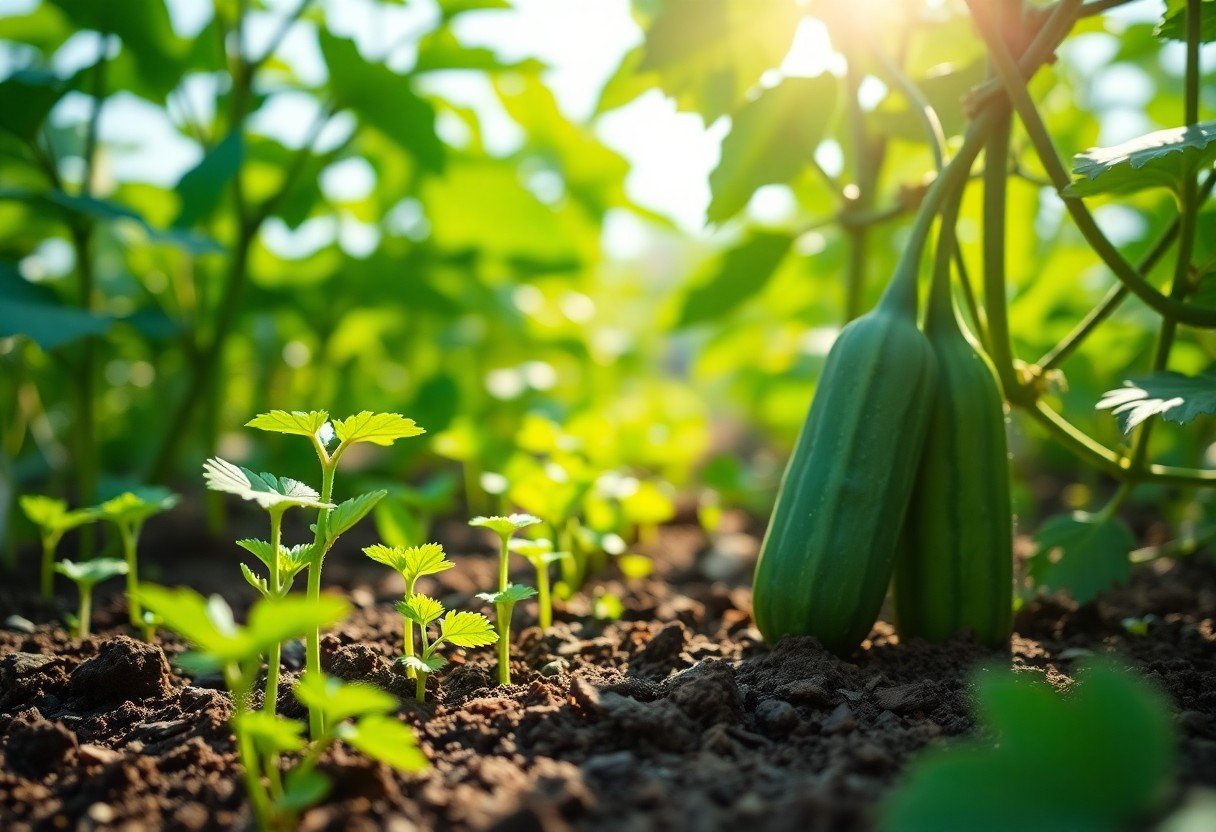Just imagine enjoying fresh, homegrown broccoli right from your garden. In this guide, you will learn necessary tips and techniques for growing healthy florets from seed to table. You’ll discover the best types of broccoli to plant, optimal growing conditions, and how to care for your plants as they thrive. From the moment you sow those seeds to the moment you harvest your delicious florets, you’ll be equipped with all the knowledge you need to cultivate this nutritious vegetable successfully. Let’s dig into the basics of broccoli gardening!

Understanding Broccoli
As you initiate on your journey to grow broccoli, it’s important to understand what makes this vegetable not only a delightful addition to your meals but a powerhouse of nutrition as well. Broccoli is a member of the Brassica family, which includes other superfoods like kale and cabbage. Packed with vitamins, minerals, and fiber, broccoli can be a significant part of a balanced diet. By understanding its nutritional value and varieties, you can enhance your meals while also cultivating a garden that offers a diverse array of flavors and health benefits.
Nutritional Benefits
Below the surface of its vibrant green florets lies a treasure trove of health benefits that broccoli provides. This vegetable is exceptionally rich in vitamin C, which boosts your immune system, and vitamin K, necessary for blood clotting and bone health. Broccoli is also a fantastic source of fiber, promoting digestive health and helping you feel fuller for longer. Moreover, this leafy green is loaded with antioxidants, which can combat free radicals in your body, potentially reducing the risk of chronic diseases.
Varieties of Broccoli
An array of broccoli varieties exists to suit different climates and culinary preferences, and knowing these can help you select what best fits your gardening goals. Some popular varieties include Calabrese, known for its large heads; Broccolini, a hybrid with tender stems and small florets; and Romanesco, which has a unique spiral shape and a nutty flavor. Each variety offers unique taste profiles and cooking qualities, providing you with the opportunity to experiment and discover your favorites in your kitchen.
Benefits of knowing the various types of broccoli you can grow extend beyond mere aesthetics. Choosing the right variety can mean better resilience against pests, adaptations to your local growing conditions, and even improved flavor or nutritional offerings. Whether you opt for the classic Calabrese or a more exotic Romanesco, understanding the differences can help you cultivate a diverse and rewarding garden, ensuring you enjoy the best broccoli has to offer in your meals.

Growing Conditions
Some of the key factors for successfully growing broccoli revolve around understanding and optimizing the growing conditions. You want to ensure that your plants thrive, which means paying attention to soil, climate, and temperature. Each of these aspects plays an imperative role in developing healthy florets that you can enjoy at your table.
Soil Requirements
After selecting your planting site, the next step is to focus on soil requirements. Broccoli prefers well-drained, fertile soil rich in organic matter. Aim for a pH range of 6.0 to 6.8 to ensure optimal nutrient availability. Before planting, you may want to enrich your soil with compost or well-rotted manure, which not only improves soil texture but adds ecosystem benefits for your plants.
Additionally, it would be beneficial to use a soil test kit to assess nutrient levels and pH. If needed, you can amend your soil with specific fertilizers or lime to create the best growing environment. The right soil preparation will foster robust root growth and ultimately lead to a bountiful broccoli harvest.
Climate and Temperature
About the ideal climate for growing broccoli, it thrives in cool weather but requires sunshine to flourish. The optimal temperature range for growing broccoli is typically between 60°F and 70°F (15°C to 21°C). By planting in early spring or late summer, you can enjoy one or two harvests a year, depending on your local climate.
Growing Broccoli: Climate & Temperature Overview
| Aspect | Details |
|---|---|
| Optimal Temperature Range | 60°F – 70°F (15°C – 21°C) |
| Sunlight Requirements | Full sun for at least 6 hours daily |
| Disease Prevention | Cool conditions help prevent pests like aphids |
Due to broccoli’s preference for cooler temperatures, it is best to avoid planting during the height of summer heat. When temperatures rise above 80°F (27°C), broccoli is prone to bolting, which means it will prematurely flower and produce seeds instead of florets. Therefore, timing your planting carefully based on your local climate conditions can significantly influence the outcome of your gardening efforts.
Timing Considerations for Broccoli Growth
| Season | Best Planting Time |
|---|---|
| Spring | 2-4 weeks before last frost |
| Fall | 2-3 months before first frost |

Planting Broccoli
Now that you’ve decided to grow broccoli, it’s time to examine into the intricacies of planting. Successfully cultivating this nutritious vegetable begins with understanding its planting process, whether you choose to start from seeds or transplant seedlings. Both methods require attention to your local climate and soil conditions, so it’s beneficial to tailor your approach to ensure robust growth and a bountiful harvest.
Starting from Seeds
One effective way to grow broccoli is by starting from seeds. Begin by selecting a high-quality seed variety that suits your climate, and then sow them indoors about 6 to 8 weeks before the last expected frost. Using seed trays filled with a quality seed-starting mix will help give your seedlings a strong start. Keep the soil consistently moist and provide plenty of light, as broccoli seedlings thrive in sunny conditions. When the seedlings develop their first true leaves, it’s a sign that they are ready for the next stage of growth.
Transplanting Seedlings
On the other hand, if you opted to start your broccoli from seeds indoors, transplanting your seedlings outdoors is a significant step in your gardening journey. Once your seedlings have grown strong and are about 4 to 6 weeks old, it’s time to acclimate them to their outdoor environment. Begin by hardening them off; this means gradually exposing them to outdoor conditions over the course of a week. This process will minimize transplant shock and help your plants adapt to the sunlight and breezes they will encounter.
It’s crucial to choose a well-draining planting site that receives full sunlight for at least six hours a day. You should prepare the soil by incorporating organic matter, which enriches the soil and provides your seedlings with crucial nutrients. When transplanting, dig holes that are deep and wide enough to accommodate the root system of your seedlings without crowding them; spacing them about 18 inches apart will allow them enough room to grow. Watering them immediately after planting helps settle the soil and provides the necessary moisture for their establishment.
Care and Maintenance
Once again, providing proper care and maintenance for your broccoli plants is key to ensuring a healthy and abundant harvest. From watering to fertilization, these aspects will significantly influence the growth and quality of your florets. It’s imperative to establish a care routine that meets your plants’ needs, helping them thrive from seedling to harvest. Regular monitoring of your broccoli will allow you to adjust care as necessary, ensuring they remain robust and productive throughout their growth cycle.
Watering Techniques
Between heavy downpours and bright sunny days, making sure your broccoli receives adequate watering is fundamental for promoting healthy growth. Broccoli requires consistent moisture, but it’s equally important to avoid waterlogging. Implementing a schedule for watering can ensure your plants receive the right amount of water without becoming over-saturated. Aim to keep the soil consistently moist but not soggy, which allows the roots to properly absorb nutrients while preventing diseases that thrive in overly wet conditions.
Fertilization Tips
Maintenance of your broccoli plants also includes effective fertilization practices that enhance soil nutrients for optimal plant growth. You should consider applying fertilizers rich in nitrogen, as broccoli is a nitrogen-loving plant. Fertilization should typically occur during the growing season, particularly when your plants start to show their first true leaves. Here are some tips for successful fertilization:
- Use a balanced organic fertilizer that includes slow-release nutrients.
- Apply fertilizer at least twice during the growing cycle for continued nourishment.
- Avoid applying fertilizer directly on the leaves to prevent burning.
The key to healthy fertilization is to closely observe your plants’ growth stages and adjust as needed, ensuring that they receive adequate nutrition.
Understanding the right amount and type of fertilizer to use is critical for the overall health of your broccoli. You may need to conduct a soil test to determine existing nutrient levels and amend them accordingly. This helps tailor your fertilization approach to meet the specific needs of your soil and plants. Fertilizing thoughtfully will have a durable impact on your broccoli harvest.
- Organic fertilizers can improve soil structure over time.
- Liquid fertilizers can be applied for quick nutrient uptake as needed.
- Observe any signs of nutrient deficiency, like yellowing leaves, to guide your fertilization decisions.
The attentive gardener will find that adequate fertilization becomes a reliable foundation for a healthy and bountiful broccoli crop.

Pest and Disease Management
Not all gardening experiences are free from challenges, especially when it comes to maintaining the health of your broccoli plants. You’ll likely encounter common pests that can threaten your crop if not managed effectively. Aphids, cabbage worms, and flea beetles are prevalent culprits that can disrupt your growing process. Aphids feed on the nutrient-rich sap of the leaves, while cabbage worms target the foliage, potentially decimating your plants before they even mature. To combat these pests, you can utilize organic methods such as introducing beneficial insects like ladybugs or implementing traps and barriers to protect your plants.
Common Pests
Behind the scenes of your thriving garden, these pests have found a dessert in your broccoli patch. As you keep an eye on your plants, regularly inspect the undersides of leaves where pests love to hide. Applying insecticidal soaps or neem oil can effectively reduce their populations without harming your crop or the environment. Being proactive in identifying any signs of pest infestations early on can save you from larger problems down the road, allowing your broccoli to grow healthy and vibrant.
Preventing Diseases
Across your garden, diseases such as downy mildew and black rot can arise and wreak havoc on your broccoli plants if you’re not vigilant. To minimize the risk, it’s necessary to practice crop rotation by not planting broccoli or other cruciferous plants in the same place year after year. This helps break the cycle of diseases that thrive in the soil. Ensuring good air circulation around your plants is also important; overcrowded foliage can trap moisture, creating an inviting environment for fungal growth.
With effective care and attention, you can further bolster your plants’ defenses by applying preventative measures. Consider using disease-resistant seed varieties and implementing mulches that help suppress weeds, which can harbor pests and pathogens. Regularly monitoring your plants and maintaining cleanliness in your garden area will also go a long way in keeping diseases at bay. By prioritizing pest and disease management, you will pave the way for a bountiful harvest of delicious and nutritious broccoli florets.
Harvesting Broccoli
After investing time and energy into nurturing your broccoli plants, it’s time to enjoy the fruits of your labor by harvesting. One of the key aspects of harvesting broccoli is timing—it directly affects the quality and flavor of your crop. By knowing when to harvest, you’ll ensure that your broccoli produces delicious, tender florets rather than bitter or tough ones. Aim to harvest your broccoli heads when they are firm and compact, with tightly closed flower buds. Typically, this is about 60 to 90 days after sowing seeds, depending on the variety and growing conditions. Observing the color is also important: vibrant green is a sign that your broccoli is ready to be picked.
When to Harvest
Broccoli thrives in cooler weather, so be mindful of the growing season in your area. Generally, the best time to harvest broccoli is in the morning after the dew has dried. The cool temperatures can enhance the flavor and make the harvesting process easier. Once you notice that the buds are tight and the head has reached about 4 to 6 inches in diameter, it’s a sign that your broccoli is at its peak. Additionally, keep an eye out for yellowing flower buds, as this indicates that your broccoli is maturing past its prime. By monitoring your plants closely, you’ll be able to pick them at just the right moment for maximum freshness.
Techniques for Cutting
An effective method for cutting broccoli can greatly enhance your harvesting experience. To properly cut the broccoli heads, you’ll want to use a sharp knife or garden shears. Aim to make your cut about 5 to 8 inches below the head, ensuring that you take a healthy stem along with it. This is important as it encourages the plant to continue producing side-shoots, which can provide additional florets later in the season. Avoid pulling the heads off, as this can damage the plant and decrease your eventual harvest.
Even if you’re tempted to harvest your broccoli too early, waiting for the right moment will yield a much better flavor and texture. Detailed attention during harvesting goes a long way; inspect each head carefully and make sure to cut cleanly for the healthiest produce. After cutting, it’s best to cool your broccoli quickly by placing it in a basin of ice water. This retains the crispness and quality, allowing you to enjoy your homegrown bounty to the fullest.
Conclusion
With this in mind, you now have a comprehensive understanding of how to successfully grow broccoli, from seed to table. By following the outlined steps, you can ensure that your broccoli plants thrive in your garden. Selecting the right variety, preparing your soil, and providing the necessary care will help you produce healthy florets. As you commence on this journey, keep in mind the seasonal requirements and the importance of proper spacing and watering techniques to maximize your harvest.
Ultimately, growing your own broccoli not only provides you with fresh produce but also allows you to participate in a rewarding and sustainable practice. You can take pride in knowing exactly where your food comes from and how it was cultivated. So, gather your seeds, set up your garden space, and enjoy the journey that leads to flavorful, home-grown broccoli on your table. Happy gardening!














